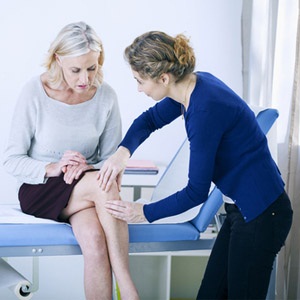
Sometimes life just happens. You fall over the dog, or a neighbour crashes into your parked car. Apart from getting rid of the dog and taking the bus, there isn’t a lot you can do to prevent certain things from happening.
But when it comes to your joints, there’s a great number of things you might be doing every day now that could affect you later in life. Nearly 3.2 million South Africans suffer from osteoarthritis, according to the Arthritis Foundation of South Africa.
While the exact causes of rheumatoid arthritis are difficult to determine, the causes of osteoarthritis are not. Osteoarthritis is a degenerative joint condition that mostly affects older people, but could affect younger ones too.
Joints endure a huge amount of stress. While nobody can completely avoid the wear and tear that comes with normal ageing, very few people in their twenties and thirties who dive into a rugby scrum think, “This is going to hurt me when I’m seventy”. But joints also get damaged while you’re going about your normal day-to-day activities.
Read:Causes of osteoarthritis
Exercising through the pain.
There’s a reason why your body registers pain – it’s a warning signal to avoid putting stress on that particular joint or area. The University of Rochester Medical Centre warns that most sports-related injuries involve damage to the joints, such as sprains (stretching or tearing of a ligament) and strains (a twist or tear of a muscle).
If you feel pain, have it checked out by a medical professional. Carrying on with what you’re doing could do permanent damage.
Doing the same thing over and over again.
This can bring on repetitive stress injuries and it’s important not to do the same activity all the time, such as cycling.
Do some cross-training. You can also get repetitive stress injuries from using the mouse on your computer for hours and hours every day. Try switching to using your other hand. It will be awkward at first, but you might prevent a repetitive stress injury to your wrist.
Carrying heavy things.
Many people get injured while moving things around the home, or simply doing things they’re not used to doing. Repetitive or strenuous tasks in the workplace can also lead to injury.
According to Statistics SA more than half of all injuries in the health and community services sector (2006 – 2007) were the result of lifting, pushing, pulling, carrying, holding or restraining people and objects. There’s a right way and a wrong way of carrying things: bend your knees instead of your back when lifting heavy stuff.
Not warming up or cooling down when exercising.
If the muscles around a joint are tight and stiff, they’re more prone to injuries. Never go straight into a heavy workout or training session without warming up.
Exercise as such (even heavy training) will not wear out your joints, but high-impact exercise such as running on hard surfaces for long periods of time could injure your knees and joints, according to Dr Christoph Stehling of the University of California.
Swimming and cycling probably carries less of a risk. Blood flow to the joints are important, and exercise provides this, but try to stick to non-weight-bearing exercises.
Read:Risks of osteoarthritis
Falling.
No one ever plans to fall. What is surprising though, is that most falls are not the result of a slippery floor in a shopping centre, or an obstacle on the pavement. According to a paper released by the World Health Organisation in 2013, 70.5% of falls occurred in private residences.
They also stated that most falls were the result of a slip or a trip on the same level. A variety of injuries can be the result of a fall – from fractures to back and head injuries, but also frequently joint injuries. It’s essential to make your home as free as possible of things that could trip you up.
Watch where you’re walking.
You don’t have to fall flat on your face to sustain a serious injury to a joint. A twisted ankle can have long and serious effects on your joint health for years to come. Wearing sensible shoes and taking great care when walking on uneven surfaces or climbing stairs could go a long way to preventing joint injuries, especially in your ankle.
Read:Treatment of osteoarthritis
Start exercising slowly.
Many people injure joints when they try and become fit too quickly. The University of Rochester warns against trying to do too much too soon and recommend that you don’t increase the length of your workouts by more than 10% in a week.
They also advise against trying to increase the length and the intensity of workouts at the same time. It’s important to listen to the professionals when you’re starting to exercise.
They have years of experience in how you can protect yourself from injury to your joints and other parts of your body.
Additional sources: Disability Safe
Read More:




 Publications
Publications
 Partners
Partners















